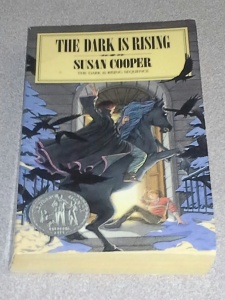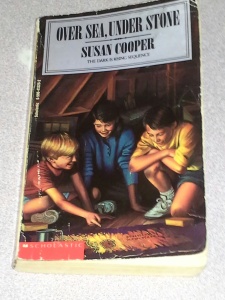
The Road Home (Photo credit: keeva999)
“Life is a journey” is one cliché all of us have heard many times. Equally true, but not heard nearly as often, is the saying that “life is a story.” In his book, “On the Shoulders of Hobbits,” Professor Louis Markos uses these two truths to frame his exploration of virtues as they are found in the writings of J.R.R. Tolkien and C.S. Lewis.
In the first four chapters of the book, Markos takes these journeys and stories and places them right in the middle of where they so often take place: The Road. Anyone who has read “The Lord of the Rings” knows that it is one of the greatest road epics ever written. In this it has much in common with such legendary works as Homer’s The Odyssey, Dante’s Divine Comedy, even Huckleberry Finn. “The Chronicles of Narnia,” while not a single tale of a long journey, contains many shorter stories involving all sorts of journeys, some intentional and some not. But long or short, all trips involve four parts: the lure or the call, the response to that call, the dangers and events encountered and finally, the end.
It doesn’t take much to lure us to the highways. We have a built-in restlessness that disposes us to go exploring, though some are easier to persuade than others. In Tolkien’s “The Hobbit,” Bilbo, as the author points out, is downright resistant to any idea of leaving his comfortable Hobbit-hole or his beloved Shire, though Gandalf and a boisterous band of dwarves prove to be very persuasive. Shasta, in Lewis’ “The Horse and His Boy,” also resists the call of the road, but out of fear rather than love of comfort. Whether hesitant or enthusiastic, everyone feels the pull of the journey.
In medieval times travelers weren’t tourists in the sense we use the word today. They were merchants, soldiers, nobles or pilgrims and their journeys weren’t taken frivolously. Travel wasn’t as easy or safe as it is today. Good roads weren’t common, there were no planes, trains or automobiles, and there was a good deal of danger involved in leaving home. Taking to the road was literally an adventure in the truest sense of the word. The reason to go had to be a good one. In the ancient Hero tales there was usually a distinct “call” that the hero had to respond to. Gandalf called Bilbo and Frodo. In the Judeo-Christian scriptures, God called Abraham and Moses to grand journeys. But what about the common person?
If you’re alive, you’re on a journey. You weren’t called to it so much as thrust into it. You’re on the Road, and you have to face the challenges and dangers you’ll encounter along the way. Oh, there will be good things that happen on the trip too, things that Tolkien called “eucatastrophes”, those exhilarating moments when some disastrous event that seemed unavoidable is suddenly eclipsed by a surprising good outcome. But by their very nature, eucatastrophes can’t be planned or counted on. So what’s a traveler to do?
As in the great stories, so in life; one keeps on going. There is help, however. In Lewis’ “The Silver Chair,” Aslan the great Lion instructs Jill to memorize four Signs that will help her on her quest. “Remember, remember, remember the Signs. Say them to yourself when you wake in the morning and when you lie down at night, and when you wake in the middle of the night.” If that sounds familiar, it is because it was patterned after Deuteronomy 6:7 and 11:19 where God is instructing His people in preparation for their journey. God has given all of us Signs, or directions, in His Word. From the Ten Commandments, to the Mosaic Law, to the Sermon on the Mount, God provides us with instructions on how to travel the Road of life.
There’s something else we need to remember about the Road. As Markos puts it: “In The Lord of the Rings, the Road is more than a path: it is a character.” In other words, it is a living, active participant in our journeys. The way we interact with the Road tells us a lot about our view of life. Do we carefully observe the events in our path and try to understand what’s happening? Or do we push forward without a thought, trying to force the Road to bend to our will? Though the comparison isn’t drawn directly in the book, this idea of the Road as a character brings to mind the concept of divine Providence, of God’s careful guidance of our lives. This belief in a living Road is critical to our journeys. We must never lose that belief and fall into a “postmodern, existential nihilism that says that there is neither beginning nor end, that we are all adrift in a world without Purpose, Direction, or Call.”
Eventually, the end of the Road arrives and for our life’s journey that means death. Markos reminds us of Pope John Paul II’s observation that we are living in a culture of death today. The issues of abortion and euthanasia, the unrelenting violence in films, television, music and art, all point to a darkness creeping over our civilization. And though we may seem to welcome it, our society has a very bad case of thanatophobia: a primal fear of death. We obsess about health, spending billions of dollars on diet and exercise and medicine, all to trick ourselves into believing that we can be immortal through our own efforts, that our journey never has to end. But it does. The purpose of the journey is not to keep traveling, but to grow and arrive at the place the Lord of the Road has been leading us to. And thus:
We bring our years to an end,
as it were a tale that is told. (Psalm 90:9, from the Book of Common Prayer)







